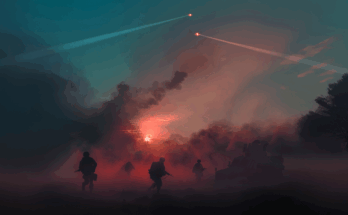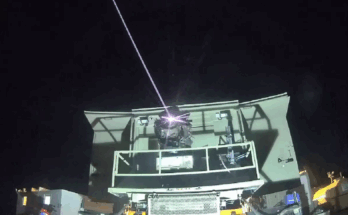
As the past month has shown, regular, urgent pronouncements and directives from government agencies, especially in the U.S., are becoming a common feature of the Counter-Drone development effort. Meanwhile, recent weeks have also seen the usual introduction of innovative solutions as well as the latest news in testing and development. Here’s a recap of some C-UAS highlights from the past month.
On March 31, 2025, the U.S. Congressional Research Service released a report titled, “Department of Defense Counter Unmanned Aircraft Systems: Background and Issues for Congress.,” which provides lengthy information on DoD policies, organization, and systems and recounts recent legislative and development activity concerning multiple counter-UAS programs. According to the report, “The size, speed, and altitude at which many drones fly, as well as the increasing ubiquity, flexibility, affordability, and sophistication of these aircraft, are widely seen as creating significant technical and operational challenges for the U.S. DoD.”
In Addition, the report declared, “Congress may play an important role in this area, including authorizing and appropriating funds for counter-UAS activities; maintaining or changing relevant authorities, policies, and organizations; and exercising oversight of DoD’s execution of its counter-UAS role.”
On April 10, Duality AI announced a C-UAS related contract award from the U.S. Army’s XM30 Program Office, which is building the next generation successor to the M2 Bradley infantry fighting vehicle. With the XM30 as its platform, the counter-drone system, Aided Target Detection and Recognition (AiTDR) is under development. Working with Duality, the service and team members will leverage synthetic data generated from virtual sensors using the company’s Falcon digital simulation platform.
According to the Army, AiTDR software automates and expedites the detection and classification of threat personnel and vehicles in complex tactical environments. By employing AI and Machine Learning algorithms trained to locate potential threats, along with the integration of advanced sensor payloads and AiTDR processing, the critical time to interrogate threats will be reduced.
Within days of the Duality AI news, the U.S. Marine Corps announced plans to field dismounted C-UAS capabilities across the entire Marine Air-Ground Task Force (MAGTF). This will translate into the widespread use of technologies to detect, track, identify, and defeat adversary UAS with both kinetic and non-kinetic means.
Highlighting the worldwide nature of C-UAS development, on April 17, the British government announced the successful use of a new radiofrequency directed energy weapon (RF DEW) in trials against a drone swarm. The system, called RaidDestroyer, utilizes high frequency radio waves to disrupt or damage an adversary drone’s electronic components, causing them to crash or totally malfunction from a capabilities standpoint.
For the trials, the British Army, worked in collaboration with Defence Equipment & Support (DE&S), the Defence Science and Technology Laboratory (Dstl), and Thales UK.
Join Forecast International at the Paris Air Show to gain valuable insight into the evolving dynamics of the global defense market. Traditionally regarded as insulated from broader economic fluctuations, the defense sector is now increasingly impacted by global economic forces. Tariffs, trade disputes, and rising economic nationalism are introducing new complexities that affect the stability, cost-efficiency, and resilience of critical defense programs.
For over 50 years, Forecast International has been a trusted authority in aerospace and defense intelligence. Our mission is simple yet vital: to equip industry leaders with the data-driven insight and strategic foresight needed for confident, informed decision-making. Visit us at Hall 3, Booth C164 to learn how our expert analysis can strengthen your planning and elevate your strategy.
Schedule a time to meet with us in Paris.
Andrew Dardine is lead analyst for Forecast International's Defense Electronic Systems group. He is the primary author of Forecast International's Electronic Warfare Forecast and co-author of Electro-Optical Systems Forecast and C4I Forecast. Andrew is also a regular contributor to FI's Defense & Security Monitor blog, offering insights into developing technologies such as directed-energy and next-generation jamming systems. His analysis of such vital market areas as EO/IR systems and electronic countermeasures technology has been cited in Defense News, Aerospace Daily, and Bloomberg Businessweek, among other news media. He has also written about the electronic defense market for Aviation Week and the Journal of Electronic Defense.





